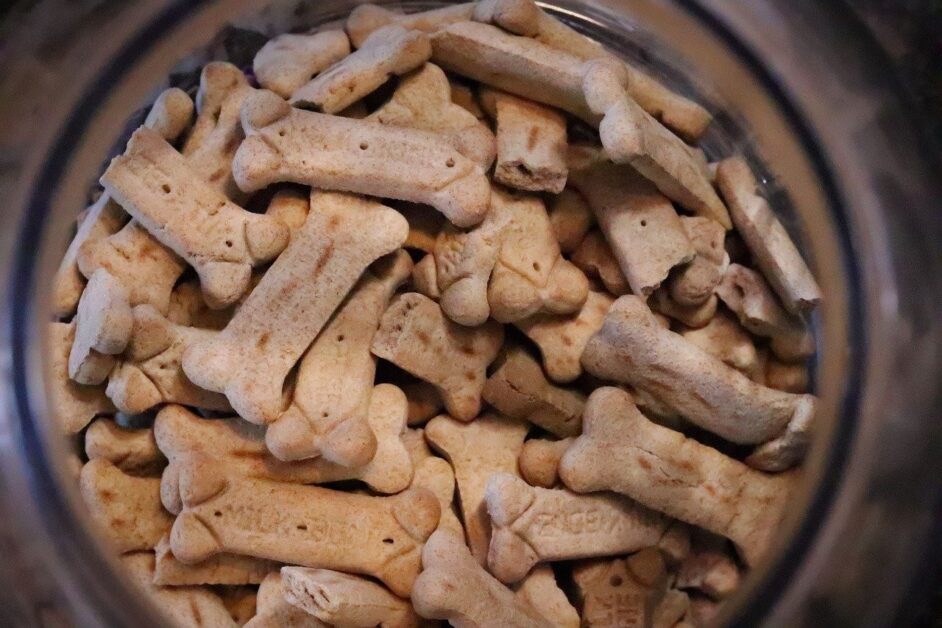Giving treats to dogs is a long-standing practice among dog owners. Due to the history of this practice, there are different kinds of treats available in pet stores.
These delicious goodies have been used for different purposes such as training canines, bonding, or just spoiling your pooch. You can check out dog treats at holistapet to find out other uses of these snacks. Despite their various uses, pet parents should exercise caution when handing out these tasty snacks to their furry friends.
Hence, you need to be careful of the number of treats you give your dog as well as the type. It is important that you feed your poodle with the appropriate snack that fits their likings. Since these treats are made different; it stands to reason that there are some that your pet will prefer over others. Therefore, you need to find out what types get them excited.
Furthermore, treats as part of your tyke’s diet shouldn’t exceed 10%. In the event that it does, then you need to adjust the meal portions to accommodate this.
Dog Treats Types
As we said earlier, there are different types of treats that you can give to your dog. Therefore, in this section, we will look at the major types to enable you to determine which is perfect for your four-legged buddy.
1. Crunchy
This type includes bars, biscuits, kibbles, cookies, etc. As expected, they are produced with all kinds of flavors, sizes, and shapes. However, their moisture content is usually around 10% to 12%.
If you feed this to your dog, it will need some time to eat it up as they are quite hard and don’t readily break. Hence, you can’t use them for quick rewards. Nevertheless, they do crumble when chewed. Therefore, licking up the crumbles will require some time as well.
In most cases, these snacks come with some kind of grain; however, there are some do not contain any grain. Therefore, if your dog has an issue with consuming grain, you can opt for those that are grain-free. Visit https://www.akc.org/expert-advice/nutrition/can-dogs-eat-wheat/ to learn if dogs can eat grains.
2. Soft and Chewy
You can get these in different varieties and they are perfect for training your canine pal. Their moisture content is higher (about 25%) and they are packed with humectants that enable the treats to retain their soft chewy texture.
As a result, they can be broken easily into smaller pieces. This is one of the reasons they are perfect rewards for dog training. Moreover, their “stinky” nature which most mutts love makes them very desirable snacks.
Furthermore, you can carry this type of treat easily. Hence, it is great if your puppy loves food and will search for treats all around the house and even bags and pockets.
3. Freeze-Dried or Dehydrated
Most mongrels love these treats due to their appetizing nature. Hence, they can be used as training treats. An advantage of this snack is that it doesn’t have additives. Instead, they are 100% protein in most cases.
Jerky is just dehydrated meat. All you need is a food dehydrator or your oven at home to make one of these. Interestingly, you can also dehydrate vegetables and fruits such as apples, pumpkin, and sweet potatoes into tasty goodies that your canine buddy will love.
When choosing this treat from the store, ensure that the items are gotten from a reliable source. Also, the ingredients should not contain preservatives as this could harm your pooch even though it preserves the product.
4. Animal Parts
Rawhides, pig ears, hooves, and animal bones are some animal parts that are used to make dog treats. One might think that given the source material, such snacks are usually healthier, more natural, and appealing. Sadly, this isn’t true in most cases.
A typical example is when rawhides or pig ears are used. Naturally, these parts contain high calories and fats. While that in itself is not bad, however, giving such to your overweight dog or one with a sensitive stomach can cause more harm than good.
Also, the processing of pig ears means that there is a tendency for these parts to get contaminated with chemicals that are not safe. It has been discovered in recent times that rawhides and pig ears can contain harmful bacteria contamination. Salmonella is known to contaminate these animal parts and can lead to diarrhea, bloody stool, vomiting, pains, and aches. Click here to read more about Salmonella infection in dogs.
Furthermore, the digestibility of these animal parts is another thing to consider. Although pig ears are digestible, they are usually messy. Rawhides, on the other hand, are not easily digestible. Apart from that, they can lead to choking.
If you choose to give your dog pig ears and rawhides, it is advisable to do so under strict supervision. Also, they should be given occasionally. Hooves and bones, on the other hand, are in most cases never recommended for a couple of reasons.
First of all, they could lead to gastrointestinal issues. Also, they could splinter and break teeth particularly the upper jaw large shearing teeth. Cooked bones, chicken bones, and antlers are regarded as very dangerous.
5. Long-Lasting Chewy
Instead of feeding your pup actual bone, you should opt for a long-lasting chew such as a bully stick. They are safer and can be digested easily. Also, they have just one ingredient and are preservative-free. Some of these chews are made from digestible plant materials.
Since they can be chewed for long, they will keep your dog busy for a while. Hence, they also help to clean your tyke’s teeth. As good as they may be, you should use them occasionally since they have high-calorie content.
Conclusion
In the article above, we have looked at the types of threats that you can give to your dog.






